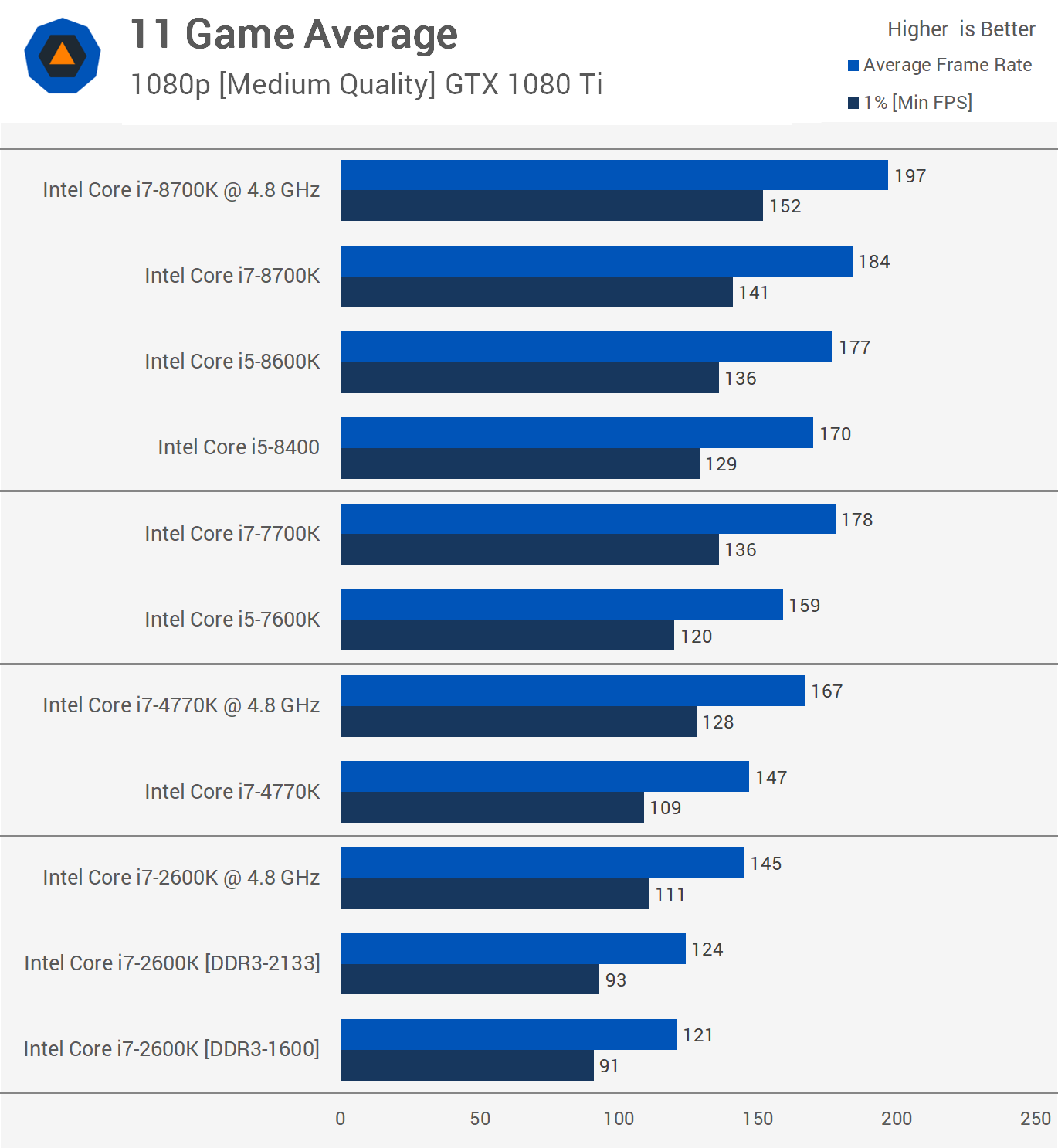What Does This Mean for Sandy Bridge Owners?

If we look at the data from the lowest quality presets tested at 1080p across the 11 games in this article, we find that the overclocked 2600K was 27% slower than the overclocked 8700K when comparing the average frame rate, or you could say that the 8700K was 37% faster.
This is true of both the average frame rate and 1% low result. On average, the overclocked 2600K was also only able to match the stock 4770K and was therefore beaten by the stock 7600K. That said, in games such as Battlefield 1, the 2600K still provided a better experience when compared to the quad-core Core i5 processor.

For those gaming at what is probably a more realistic resolution, the overclocked 2600K was just 17% slower than the 8700K when comparing the 1% low results and that's still a pretty big margin to be honest, especially given how heavily limited the 8700K was. The 2600K was just 10% slower when comparing the average frame rate but really it's those 1% low results that gamers will notice the most.
Our Conclusion
What does this mean for you if you're a Core i7-2600K owner? Currently, probably not a lot. If you're running a graphics card that's equal to or slower than the GTX 1070, you don't really need to do anything for now assuming you've overclocked that sucker to at least 4.5GHz.
At its stock clock speeds, the 2600K will often limit performance of a GTX 1070 or Vega 56 graphics card, so be aware of that. With a GTX 1060 or RX 580 though you'll have no such problem.
Overclocked, the 2600K averaged 140fps in Battlefield 1 and a GTX 1070 is good for around 115fps with the 8700K, so for the most part you should be okay. In Call of Duty WWII, the GTX 1070 offers 133fps on average with an 8700K while the overclocked 2600K managed 134fps with the 1080 Ti, so you're certainly on the edge with the 2600K and GTX 1070 combo.
If you're playing the latest and greatest titles on an overclocked 2600K with a GTX 1080 or better, then you're without question restricting the GPU's performance. Of course, the 2600K is now a seven year old CPU so the fact that it's slowing up high-end GPUs probably should be that surprising.
Sandy Bridge has fared well over the years, better than any CPU architecture we've seen before, but we're now at the end of the road. The final generation of GPUs will likely see budget mid-range GPUs finding the limits of the 2600K and at that point it will certainly be worth upgrading.
Shopping shortcuts:
- Core i5-8400 on Newegg, Amazon
- Core i7-8700K on Newegg, Amazon
- Ryzen 5 1600 on Newegg, Amazon
- Ryzen 7 1700 on Newegg, Amazon
Sill, if you're serious about your games and you play titles such as Battlefield 1 and Call of Duty WWII then I strongly suggest you look at upgrading to an eighth-gen Core processor or 2017's best value option, the Ryzen 5 1600.

